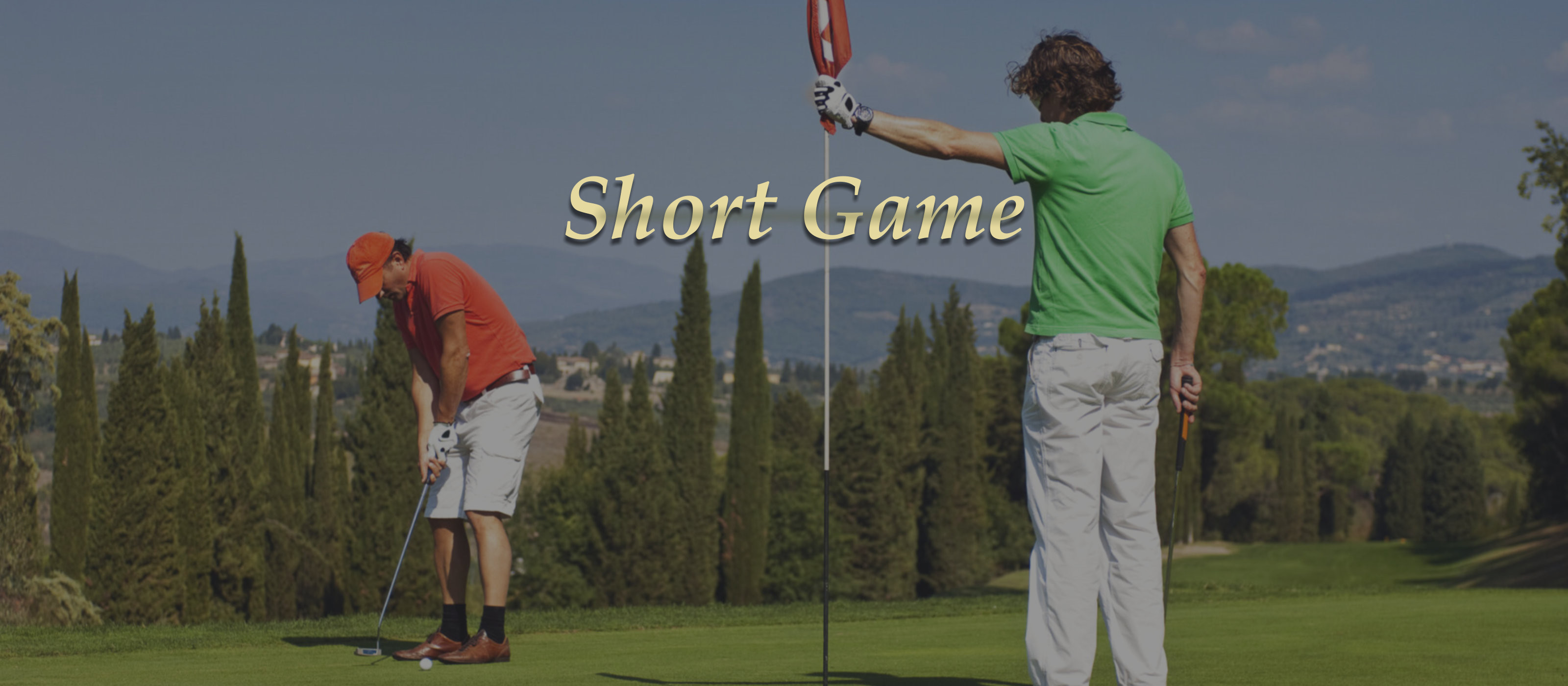SHORT GAME
It's not unusual for golfers to spend a great deal of time on the driving range or the putting green. This means that they may improve their ability with the driver and the putter while their short game skills languish.
Let's take a look at some basic tips that will help you to improve your short game. The next step is to sign up for golf lessons in Orlando with a seasoned professional.
CHIPPING
One of the top tips for improving your chipping game is to ensure that you're using the proper posture. This boils down to bending forward from the hips and letting your arms hang down from your shoulders. Assuming a squatting posture is a frequent mistake. This position doesn't get you placed correctly to let your club swing.
Once you're in the correct posture, it's time to ensure that you strike down to make the ball go up. This can be as simple as ensuring that your body is slightly tilted toward the target. As you begin your swing, remember to maintain your arms in the same triangle shape throughout the motion.
The size of the stroke will vary depending upon personal preference and the length of the shot you want to hit. A good rule of thumb for most chips is that your club will not go above hip level. Ideally, you'll achieve equal height on the back and the through.
PITCHING
What's the difference between a chip and a pitch? The only real contrast is that the pitch carries farther than it rolls.
Most of the energy in the pitch shot is into the air and relatively high. This means that you may need to take a bigger swing, and this can translate to larger errors. Improving your technique can help you avoid these errors.
Before all else, make certain that you're selecting a wedge that has sufficient loft and bounce to get the effect you want. Bounce basically refers to the rounded bottom of the club, a feature that prevents the club from digging into the ground. If you need to make a shot off of hardpan, you may want a wedge with minimal bounce so that you can dig into the ground a bit. Softer surfaces call for greater bounce.
To make full use of the bounce, make certain that you set up correctly. That means seeing the markings on the grip centered with the shaft similarly centered in the middle between your feet.
Once again, your posture can make a huge difference. Avoid taking a squatting posture, opting instead for a slight bow from your hips and letting your arms hang from your shoulders.
Don't forget that it's essential to hit down in order to get the ball aloft. Be certain that you are not lifting the ball in the air, which will cause the ball to go too low and far.
BUMPS & RUNS
Mastering a shot that runs along the ground typically is a great deal easier than one that flies through the air. Consequently, the bump and run is an imperative tool to have in your store of golf skills.
Make certain that you're starting with the right club. Usually, that means choosing a club with a lower loft. A 52-degree wedge is perfect in most cases.
A good set up can make the difference between success and failure when it comes to this shot. Place the ball slightly toward the rear of your stance. Hold the shaft vertically, and position yourself a little closer to the ball than you normally would.
Once in the correct set up, remember that all you have to do is rock your shoulders, just as you would for a putt.
If you want to learn even more refinements for your bump and run, then maybe it's time for some Orlando golf lessons.
FLOP SHOTS
Often considered a shot that's reserved for more advanced golfers, the flop can be immensely useful to any player. A flop shot basically involves a big swing with a short shot. When you need to escape from a bad situation on the course, the flop can be your savior.
A flop is a specialized shot that involves making the ball quickly soar high in the air with plenty of spin. The ball lands softly on the green.
If you want to improve your flop, be sure to refine your club selection. You want as much loft as you can get, and that typically means choosing a sand wedge with 56 degrees of loft or a lob wedge with 60 degrees of loft.
For optimum results, assume an open stance with the feet and upper body pointing slightly to the left of the target. Open up the club face too as this will help the ball to move into the air faster.
Ball placement is critical. Check that the ball is forward of the midpoint of your stance, which might feel awkward at first.
7 THROUGH SANDWEDGE
The seven, eight and nine irons are designed with more loft than the irons with lower identifying numbers. Thanks to the sharper angle on the face of the club, these irons make the golf ball travel higher in the air but for a shorter overall distance.
The seven iron typically is used for shots of about 140 yards while the eight iron is good for approximately 130 yards. Use the nine iron when your shot is 120 yards or shorter.
Take out your pitching wedge for shots of 110 yards, but opt for the sand wedge when you need to move the ball about 90 yards.
You may need to make small changes to your stance and set up depending upon which of these clubs you are using.
MAKE AN APPOINTMENT TODAY
If you are looking for more pointers to improve your short game using the seven iron through the sand wedge, sign up for golf lessons with a professional in Orlando.


